Your cart is currently empty!
A Critical Look at the United Nations’ Genocide Convention
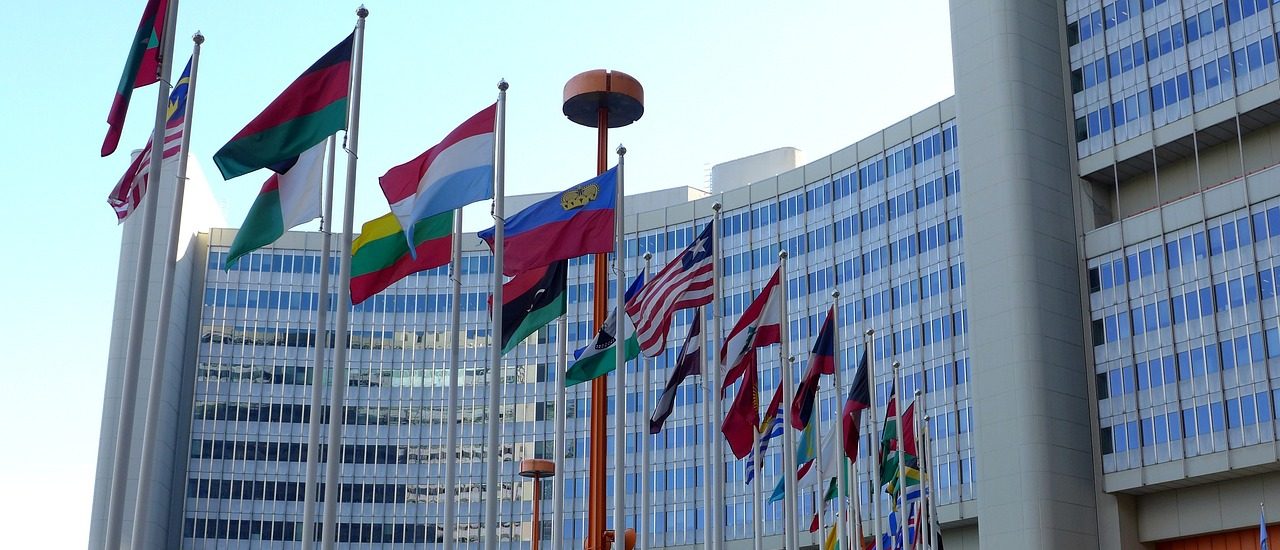
What’s in a Name?
The word “genocide” is derived from the Greek genos (γένος), meaning “family, tribe, clan, race, stock, or kin,” and the Latin root –cide (-cīdium), meaning “kill.”
Raphael Lemkin, a Polish Jewish lawyer, coined the term “genocide” in 1943, and in 1944 he published Axis Rule in Occupied Europe, wherein the term made its debut in print. Before then, the word “genocide” did not exist. That does not mean that genocides did not exist before WWII, but they were instead called tragedies, atrocities, or mass murder.
Lemkin used the term generally to explain Nazi policies against Jews and Romani people (among many others). He explained how the term genocide should not only include the explicit policies of exterminating groups of people, but also the policies which intended to destroy a population slowly. Policies that would decrease the birthrate of a population or erase their cultures, languages, and religions, are also genocidal policies.
The Ottoman Empire’s genocide of the Armenians, Greeks, Pontics, and Assyrians during WWI appalled Lemkin and the course of his life was shaped by those genocides. Lemkin, as a Jewish man, was deeply aware of Europe’s antisemitism and the growing threat of the Nazis in the 1930s.
Following the Nazi invasion of Poland, he fled to the United States, where he had an impressive career. He became a scholar and lecturer at Duke University; he worked with the Robert H. Jackson legal team, the Chief US prosecutor at the Nuremberg Tribunal; and he campaigned to create international conventions that outlined genocide to prevent further atrocities.
The United Nations recognized genocide as a crime under international law in 1946, and in 1948 the Convention on the Prevention and Punishment of the Crime of Genocide was codified. Lemkin’s definition of genocide was used in the Convention. 153 states have recognized the Genocide Convention as of April 2022, and the International Court of Justice abides by the Convention. However, 41 UN member states have not ratified the Convention. Since the ICJ recognizes the Convention as part of international law, every country in the world can be tried for committing genocide whether or not they have ratified the Convention.
Genocide is now prohibited under international law, which seems like a common-sense law.
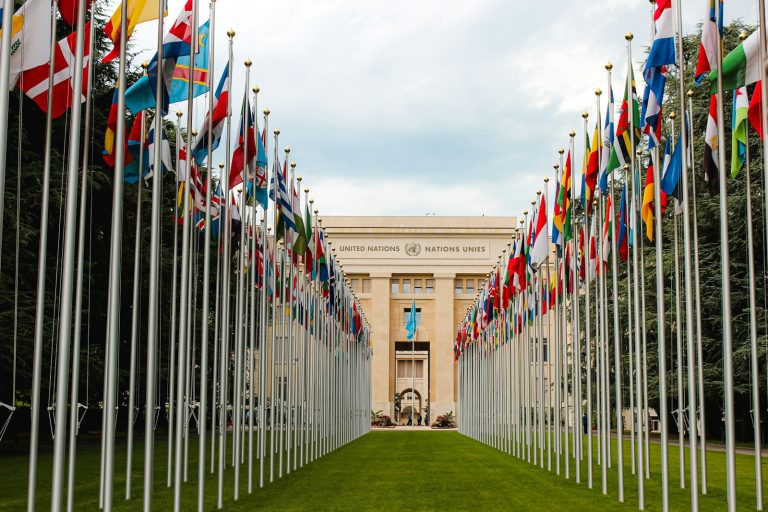
Photo by Mathias Reding, via Unsplash.
The Genocide Convention
There are nineteen articles in the Convention on the Prevention and Punishment of the Crime of Genocide.
Article I “confirms that genocide, whether committed in time of peace or in time of war, is a crime under international law.”
Article II states that “genocide means any of the following acts committed with intent to destroy, in whole or in part, a national, ethnical, racial or religious group, such as:
- Killing members of the group,
- Causing serious bodily or mental harm to members of the group,
- Deliberately inflicting on the group conditions of life calculated to bring about its physical destruction in whole or in part,
- Imposing measures intended to prevent births within the group,
- Forcibly transferring children of the group to another group.”
Article III states that the following acts are punishable:
- Genocide,
- Conspiracy to commit genocide,
- Direct and public incitement to commit genocide,
- Attempt to commit genocide,
- Complicity in genocide.”
It should be clear that the Genocide Convention does not state that all genocidal acts must be exhibited; a genocide which only uses one method in Article II can technically occur. Nor does the Convention determine a prerequisite number of deaths for a genocide to be classified as such. It is not the number or a percentage, but the intent that matters. There have been massacres of as little as 40 people classified as a genocide in a court of law, such as the Massacre of Salsipuedes on April 11, 1831, in Uruguay.
The UN also places an obligation on the states that have ratified the Convention to actively try to prevent genocide and to punish perpetrators when it happens, “whether they are constitutionally responsible rulers, public officials or private individuals,” in Article IV.
Government officials, military commanders, citizen militias, public media, and individual citizens could all be charged in a criminal case. Ordinary citizens (who did not take part in murdering people) are not often charged with genocide, conspiracy to commit genocide, or complicity in it, but they could be. In most modern cases, the media will participate in genocidal rhetoric but most often the media gets away with it.
They will dehumanize the victim group: “They’re all animals!”
They will polarize their citizens: “It’s us or them (somebody will have to die, and it won’t be us).”
They will spread propaganda time and time again and then call for a genocide blatantly on live television: “There is no innocent civilian in ___, we have to mow the lawn and get rid of the human animals!”
If each genocide was taken to court, and if each civilian who was complicit was tried, the ICJ would never get a break!
Political and Class Genocide
There has been some criticism of the fact that the UN does not include in the definition “class or political identity” as a basis for genocide. Raphael Lemkin had desired for those criteria to be part of the definition of genocide in the first place. Millions of murders have gone overlooked because state-sanctioned killing based on political affiliation is not considered genocide.
In just one example, during the late 1930s the Soviets conducted the Great Purge in which about 1.5 million politicians, religious leaders, peasants, and military were arrested. Most of them were imprisoned for a “crime against the USSR” and about half were executed for not bowing down to the Stalinist regime. Political purges continued to happen in the USSR and other communist countries, along with ethnic and religious genocides.
Anton Weiss-Wendt authored a book called The Soviet Union and the Gutting of the UN Genocide Convention which was heavily critical of the USSR. As one of the most influential UN member states, the USSR opposed a definition of genocide which included killing based on class or political ideology. It is no coincidence, as they had been killing based on those criteria for decades and would continue to do so.
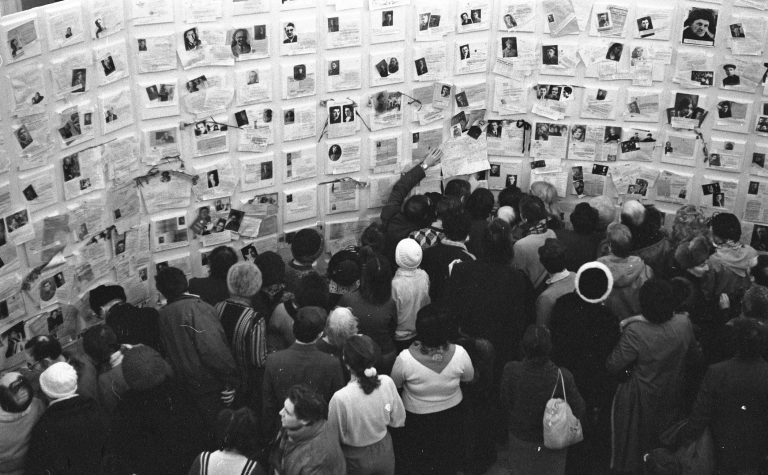
Victims of Stalin’s gulags on the Wall of Sorrow, Dmitry Borko, 1988, CC BY-SA 4.0, via Wikimedia Commons.
The Three Genocides
The United Nations has only recognized three genocides since 1948 because all UN member states must be in agreement to label something as a genocide. There have been dozens of genocides that individual member states have recognized or taken to trial within their own countries as a genocide.
But, only three genocides have been legally and globally recognized and sent to trial under the Convention:
- Cambodia (or the Khmer Rouge) from 1975-1979: a minimum of 1,386,734, but up to 2,000,000 people were killed, and millions more were forced into slave labor, sex trafficked, and/or tortured in the prisons.
- Bosnia from 1992-1995: a minimum of 31,107, but up to 100,000 people were killed.
- Rwanda in 1994: a minimum of 491,000, but up to 1,000,000 people were killed, hacked to death by their neighbors and friends with machetes and buried in mass graves.
There are large discrepancies in data like this because different countries/organizations can determine a different number based on their own political interests or biases and the available evidence. Groups who experience a genocide may inflate the casualties while the ones who commit the genocide may purposefully deflate them. In the case of Rwanda, 491,000 is the lowest recorded number but most scholars do not accept this. 800,000 is more accepted as the most reasonable estimate based on the evidence found, however Rwandans maintain that it was closer to one million people. They are still excavating mass graves, many bodies were drowned, and many were burned, making examining disintegrated remains impossible.
In the case of Cambodia, only three war criminals were convicted in court, 30 years after the genocide ended. As one can imagine, the UN has faced criticism for their glacial-paced actions.
The Bosnian genocide was tried in court over 10 years later, and only 161 perpetrators have been charged with war crimes and crimes against humanity—including genocide.
The UN created an international court to begin prosecuting the perpetrators of the Rwandan genocide just a few months after it ended in 1994, but only 93 perpetrators have been convicted. What is interesting is that the Rwandan genocide happened during the Bosnian genocide, but it was tried first, and much quicker.
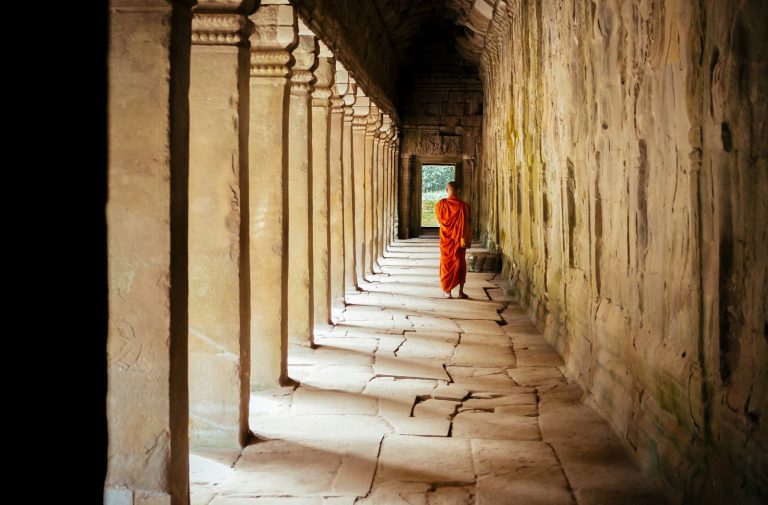
Photo by Aleksander, via Unsplash.
Genocides Continue to Happen, Even When the UN Ignores Them
The International Criminal Court is constantly investigating several countries that may have committed war crimes, human rights, violations, or crimes against humanity, which might be considered a genocide under the Genocide Convention, but they rarely call a spade a spade.
One of the most powerful members of the UN, the United States, labeled the ongoing crimes in Myanmar as a genocide in 2018, meanwhile they only officially recognized the Armenian genocide (1915-1917) in 2019.
The UN has been asked to comment on many atrocities and human rights violations, but they are hesitant to use the term genocide for several reasons: “(i) its frequent misuse in referring to large scale, grave crimes committed against particular populations; (ii) the emotive nature of the term and political sensitivity surrounding its use; and (iii) the potential legal implications associated with a determination of genocide,” (When to refer to a situation as genocide)
There is a fear of using the word genocide because it might be “misused.” There are occasions when people use the word inappropriately, but not nearly as often as a genocide happening while the UN stays back and tiptoes around the word to avoid offending anybody.
The “legal implications” would include a trial in the International Court of Justice for the country accused of committing genocide. If there was not a genocidal intent, it would be better to determine that through the court proceedings than if there were genocidal intent and the UN did nothing about it.
When the United Nations General Assembly adopted the Convention, the first human rights treaty that they had unanimously adopted, it signaled that the entire world was committed to preventing genocide—but unfortunately, genocides have continued to happen, frequently and simultaneously.
Since the end of WWII, over 50 genocides have happened, but scholars could argue that more have happened because many are lumped together. For example, there have been dozens of massacres of Hazara ethnic group committed by the Taliban, Al-Qaeda and ISIL (ISIS). This has been happening in Afghanistan for decades and will continue until the international community steps in to stop the massacres.
There are at least 19 unique genocides currently happening, many have been happening for decades because they have gone unchecked. Even if one member state or human rights organization declares something a genocide, unless all member states in the UN agree, they do not intervene.
A brief list of the ongoing genocides:
Tibet, Sri Lanka (Tamils), North Korea, Papua New Guinea, Colombia, Southeast Asia, (Hmong), Ethiopia (Tigray), Afghanistan (Hazara and other minorities), Democratic Republic of Congo, Sudan (Darfur), Mali, Syria, Yemen, China (Uyghur), Burkina Faso, Cameroon, Myanmar (Rohingya), Ukraine, and Gaza.
Organizations like the Genocide Watch, Human Rights Watch, and even the United States Holocaust Memorial Museum all do their part to monitor regional or state conflicts. The Early Warning Project assesses countries for their risk of conducting a mass killing or genocide. The goal of all of these organizations is to address the issues and attempt to prevent a genocide from occurring, they aim to uphold the global promise of “never again.”
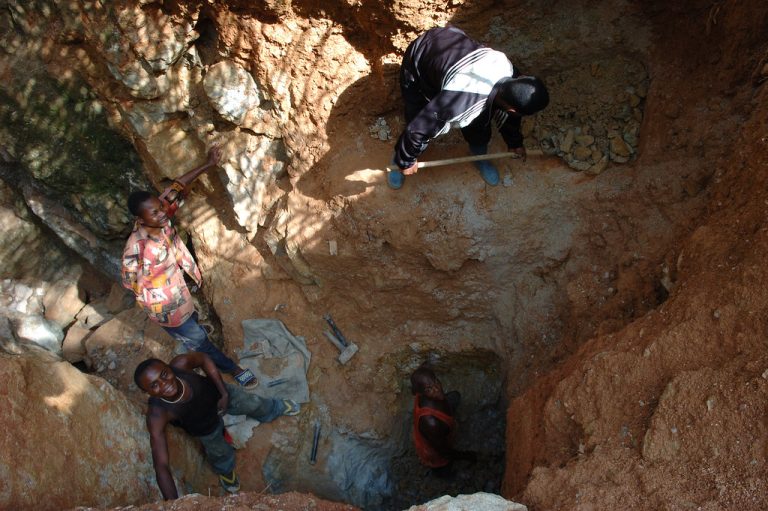
Artisanal Miners in Democratic Republic of Congo, by Julien Harneis, 2007, CC BY-SA via Wikimedia Commons.
The current crisis in the Democratic Republic of Congo is not considered a genocide by most countries or organizations, nor is it always called slavery. Congolese people work in mines, digging in hazardous conditions for minerals like cobalt which are used in rechargeable batteries that huge tech companies use in all our electronics and electric vehicles. They are forced to mine because of economic hardship and decades of war, and they will not always get paid (pennies as it is) for the work they do. One might see the mining called “artisanal mining” but that is just a fancy name for “small scale mining” rather than industrial.
It is slave labor, child labor, human trafficking, and conditions which cause the destruction of a people. It is genocide based on the criteria in the UN Genocide Convention. Slavery is genocide, although it is not often talked about in that way, especially by countries which perpetrated a slave trade. Those who commit genocides may sometimes force their victims into slave labor, as well, because slavery is genocide, period.
More Types of Genocides
Ethnic Cleansing: is the attempt to drive members of an unwanted ethnic group (often the minority) from an area through deportation, displacement, and mass killing, in order to establish an ethnically homogenous community.
Ethnic cleansings are acts of genocide if one holds the definition up next to the UN’s definition of a genocide, but the UN has not recognized acts of ethnic cleansing as a crime under international law yet. Sometimes, genocides are called ethnic cleansings to absolve the international community from acting; as soon as the UN decides, as a collective, that a country is committing genocide they must act, but they can act before then. The lack of action is what has allowed genocides to continue for years or decades at a time.
Domicide: is the purposeful widespread destruction of homes and homeland, used as a weapon and an act of genocide.
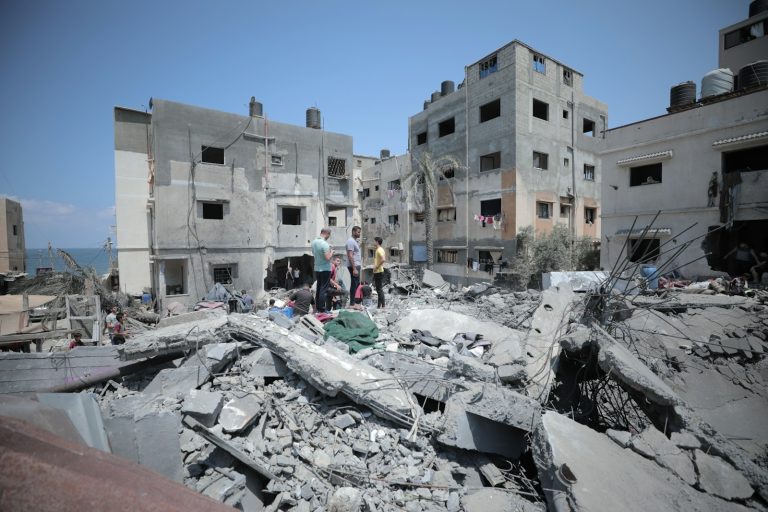
Homes in Gaza, by Mohammed Ibrahim, 2024, via Unsplash.
The Genocide Convention also does not include domicide in their definition, and they do not include it as an international war crime, but the UN does believe that adequate housing and basic needs are a human right.
In early 2024, amidst (and because of) the Palestinian genocide, an expert on the right to housing and a researcher for the UN, Balakrishnan Rajagopal, called for domicide to be included in humanitarian law as a crime against humanity. He believes that governments should be held accountable and punished for enacting domicide as a weapon against an entire population.
As the world is watching the genocide of Gazans livestreamed, people are fully aware that Gaza has been devastated and continues to be bombed relentlessly. As of February 2024, 70,000 homes were completely destroyed, leaving about 30% of the population (of 650,000 people) utterly homeless. Hundreds of thousands more homes and buildings have been damaged but were not considered irreparable as of February. This intentional destruction of civilian homes is not in Israel’s self-defense, it is domicide and it is a method of genocide.
In February 2024, more than 50 countries argued in front of the UN in support South Africa’s case that they have brought against Israel for committing genocide. The charges are that Israel has been illegally occupying the Palestinian territories, they have been committing genocide and breaking international law and human rights.
Share Your Perspective
Subscribe to Truthlytics today to stay informed and dive deeper into the issues that matter.
Already subscribed? Log in to join the conversation and share your thoughts in the comments below!




